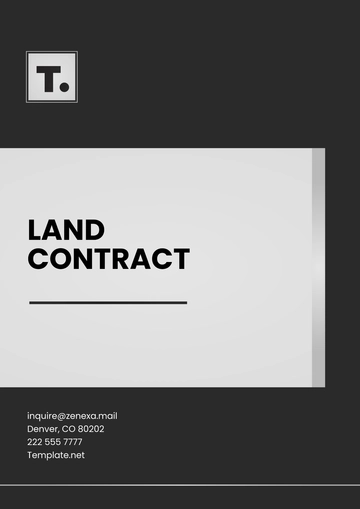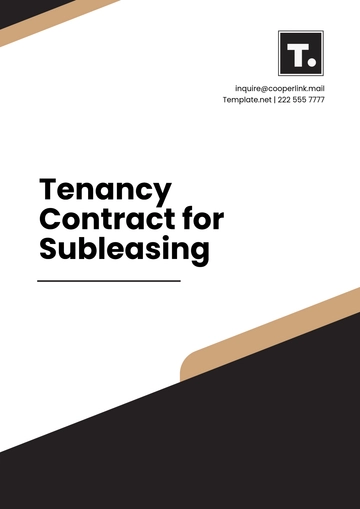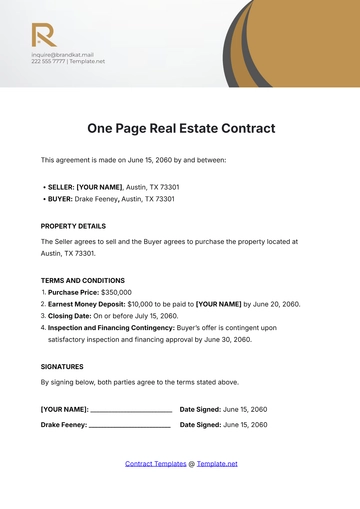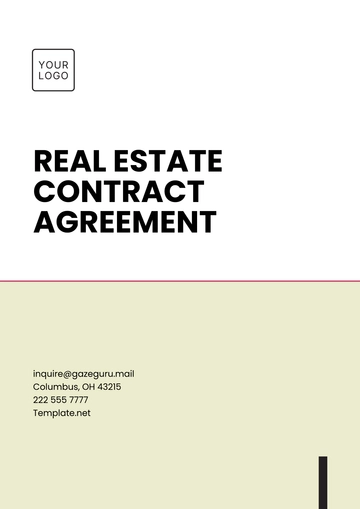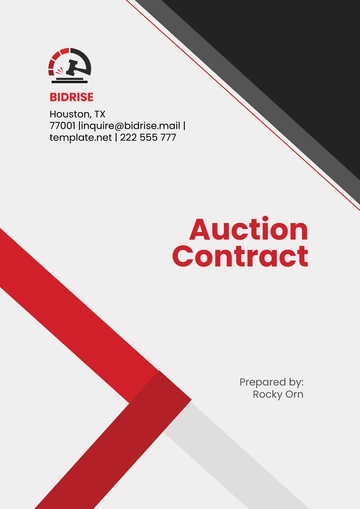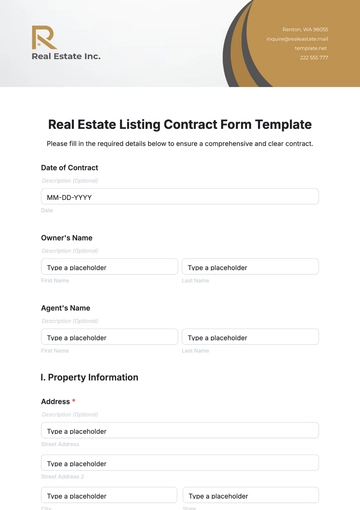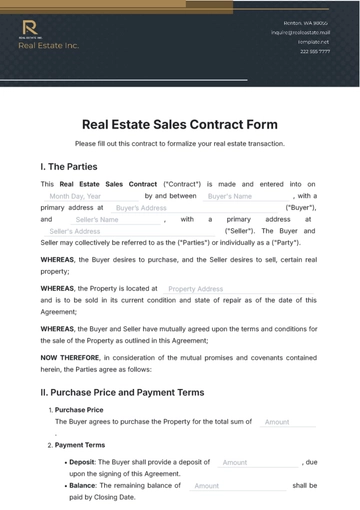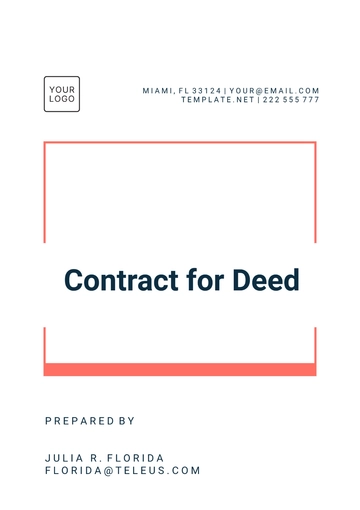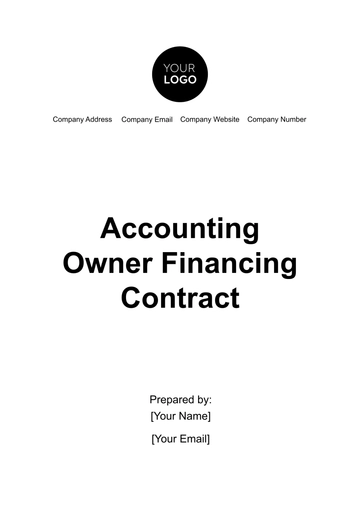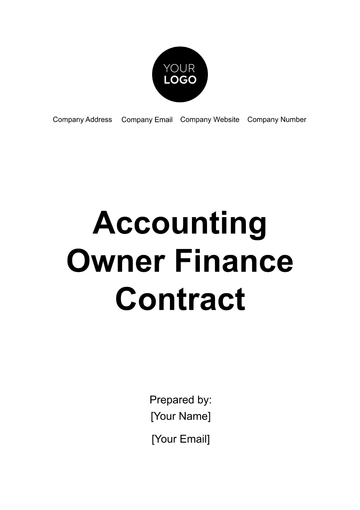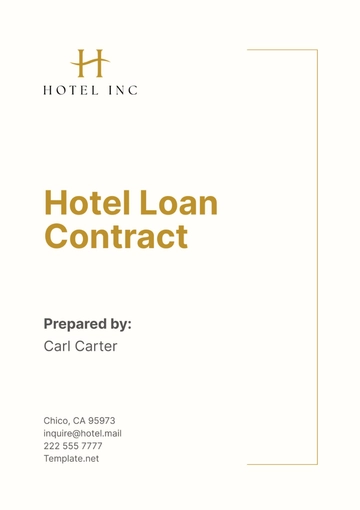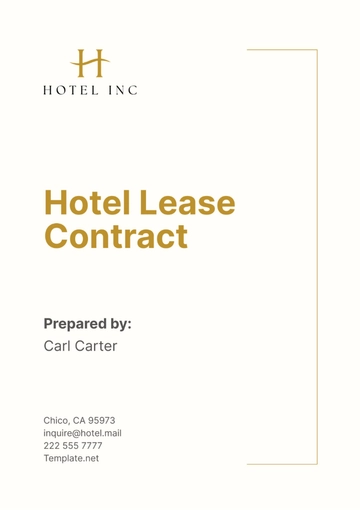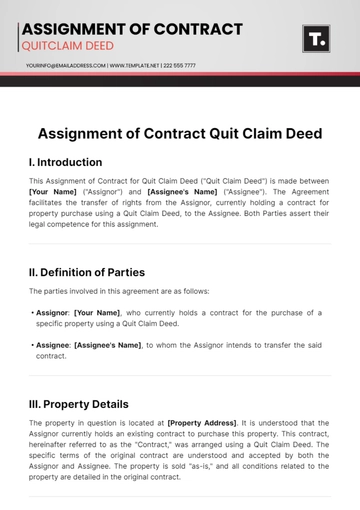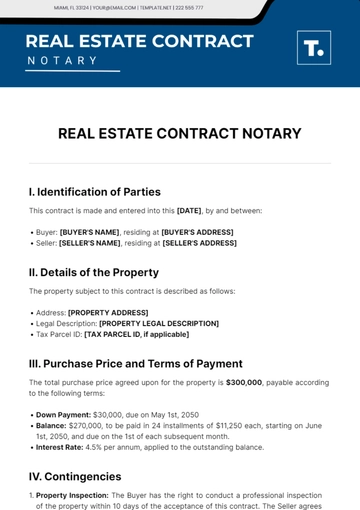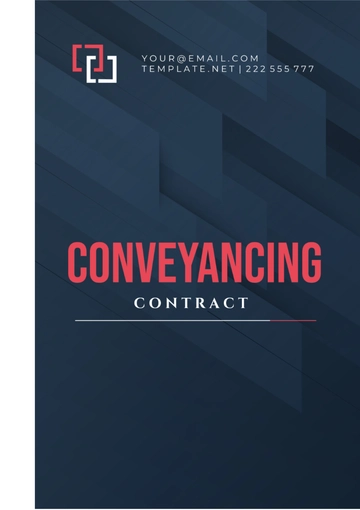Free Real Estate Eco-Friendly Landscaping Contract
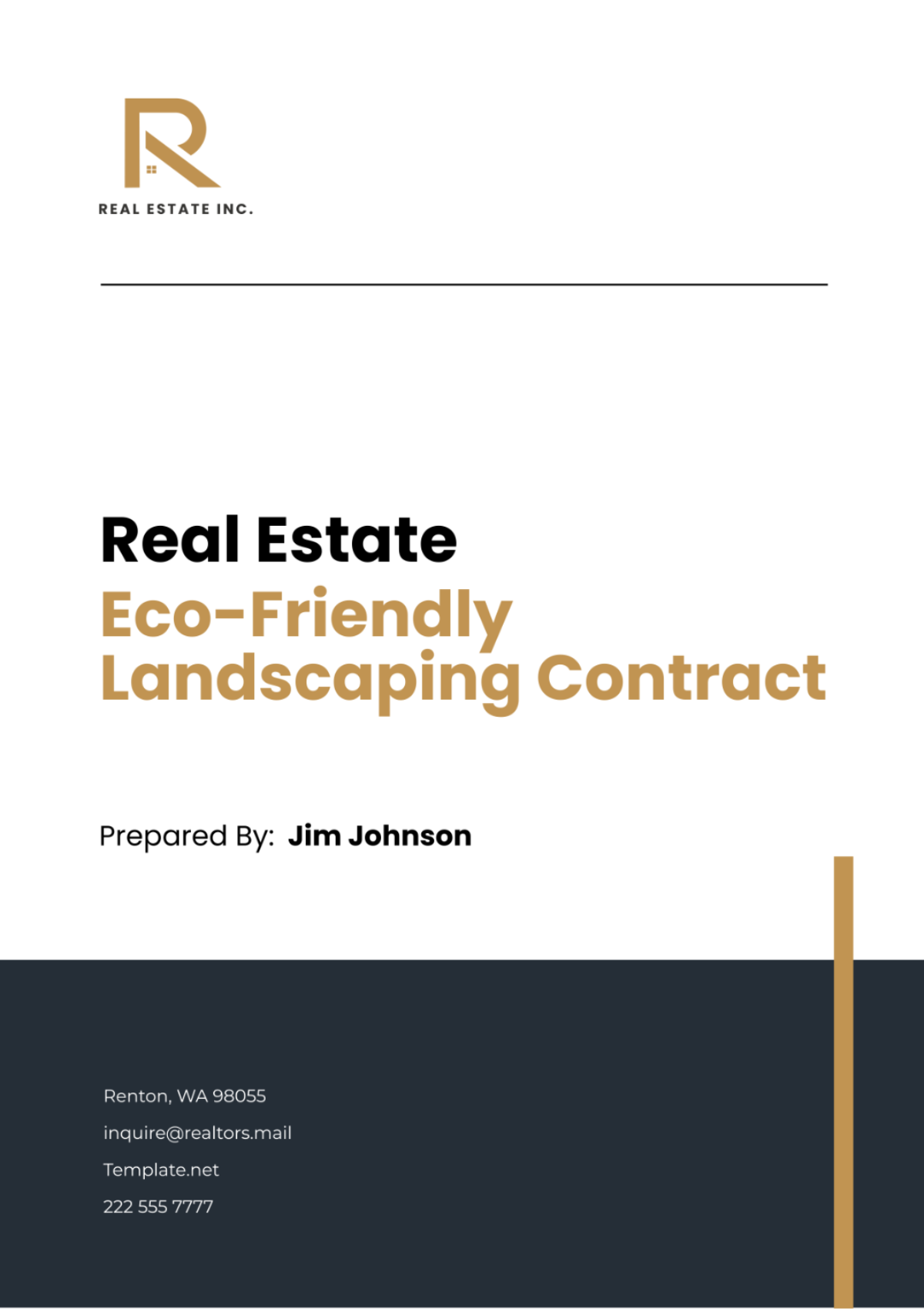
This Real Estate Eco-Friendly Landscaping Contract ("Agreement") is made this [Month Day, Year] ("Effective Date") by and between [Your Company Name] hereinafter referred to as the ("Landscaper"), and [Property Owner's Name], hereinafter referred to as the ("Property Owner"). Both parties shall collectively be referred to as the "Parties".
WHEREAS, the Landscaper is engaged in the business of providing eco-friendly landscaping services and has the necessary expertise, personnel, and resources to provide such services;
WHEREAS, the Property Owner owns and/or manages real estate properties and requires eco-friendly landscaping services to maintain the aesthetic appeal, functionality, and eco-friendliness of such properties;
WHEREAS, the Property Owner desires to engage the Landscaper to provide eco-friendly landscaping services for the Property Owner’s properties, and the Landscaper is willing to provide such services, subject to the terms and conditions set forth in this Agreement;
NOW, THEREFORE, in consideration of the mutual covenants contained herein and for other good and valuable consideration, the receipt and sufficiency of which is hereby acknowledged, the Parties agree as follows:
I. Location and Scope
A. Property Location
Authorization: The Property Owner authorizes the Landscaper to conduct work on the property situated at [Property Address]. This authorization allows the Landscaper to access the property for the purpose of providing the agreed-upon landscaping services.
Property Details: The property is located in a residential area with a total area of [5000] sq ft. It has a front yard and a backyard that require regular maintenance and eco-friendly landscaping services.
B. Scope of Services
Design and Installation: The Landscaper agrees to provide landscaping services utilizing eco-friendly and sustainable methodology and materials, which include but are not limited to:
1.1. Native Landscaping: The Landscaper will design and install landscapes using native plants that are adapted to the local climate and soil conditions. This not only reduces the need for water, fertilizers, and pesticides, but also provides habitat for local wildlife.
1.2. Water-Efficient Landscaping: The Landscaper will implement water-efficient landscaping techniques such as drip irrigation and rainwater harvesting. These techniques can significantly reduce water usage, making the landscape more sustainable and eco-friendly.
1.3. Permaculture Landscaping: The Landscaper will apply permaculture principles to create a self-sustaining and resilient landscape. This includes designing the landscape in a way that mimics natural ecosystems, thus reducing the need for external inputs and maintenance.
Organic Soil Management: The Landscaper will implement organic soil management practices to maintain soil health and fertility. This includes:
2.1. Composting: The Landscaper will implement composting practices to recycle organic waste into nutrient-rich compost. This compost will be used to enrich the soil, improving its structure, water-holding capacity, and nutrient content.
2.2. Cover Cropping: The Landscaper will use cover crops to protect the soil from erosion, suppress weeds, and improve soil fertility. Cover crops can also attract beneficial insects, further enhancing the health and resilience of the landscape.
2.3. Crop Rotation: The Landscaper will practice crop rotation to prevent the buildup of pests and diseases in the soil. This practice also helps to improve soil fertility by growing different types of plants that add different nutrients to the soil.
Energy Efficient Landscape Lighting: The Landscaper will install energy-efficient lighting in the landscape. This includes:
3.1. LED Lights: The Landscaper will use LED lights for landscape lighting. LED lights are more energy-efficient and have a longer lifespan than traditional incandescent or halogen lights.
3.2. Solar-Powered Lights: The Landscaper will use solar-powered lights wherever possible. These lights use renewable solar energy, reducing the landscape’s reliance on non-renewable energy sources.
3.3. Smart Lighting: The Landscaper will implement smart lighting systems that can be programmed to turn on and off at specific times. This can further reduce energy consumption and increase the efficiency of the landscape lighting.
Environmentally Friendly Pest Management: The Landscaper will use environmentally friendly methods for pest management. This includes:
4.1. Biological Control: The Landscaper will use biological control methods, such as introducing beneficial insects that prey on pests. This method is safe for the environment and reduces the need for chemical pesticides.
4.2. Organic Pesticides: If pesticides are necessary, the Landscaper will use organic pesticides that are less harmful to the environment and non-target organisms.
4.3. Integrated Pest Management: The Landscaper will implement integrated pest management strategies that combine various methods to manage pests in an effective and environmentally friendly way.
II. Commencement and Duration
A. Commencement
Start Date: The services under this Agreement will commence on [Month Day, Year]. This is the date when the Landscaper will start providing the landscaping services at the property.
Initial Assessment: Upon commencement, the Landscaper will conduct an initial assessment of the property. This will help the Landscaper understand the current state of the property and plan the landscaping services accordingly.
B. Duration
Term of Agreement: The Agreement will be in effect for a period of [2] years from the commencement date. During this period, the Landscaper will provide regular landscaping services as per the scope defined in the Agreement.
Renewal: At the end of the term, the Agreement may be renewed upon mutual agreement between the Parties. The terms and conditions for renewal, including any changes to the scope of services or fees, will be discussed and agreed upon at the time of renewal.
III. Compensation
A. Fee
Payment Amount: The Property Owner shall pay the Landscaper a fee of [$10,000] on [Month Day, Year] for the landscaping services provided. This amount has been agreed upon by both parties and reflects the value of the services to be provided.
Payment Date: The payment will be made on a specific date that has been agreed upon by both parties. This ensures that the Landscaper is compensated in a timely manner for the services provided.
B. Payment Methods
Preferred Methods: The preferred methods of payment are check, bank transfer, or credit card. These methods have been chosen for their convenience and security.
1.1. Check: Payment by check is a traditional and widely accepted method. It provides a physical record of payment, but it may take some time for the funds to be transferred.
1.2. Bank Transfer: Bank transfers are quick and efficient, allowing for the rapid transfer of funds from the Property Owner’s account to the Landscaper’s account. However, both parties need to be comfortable sharing their banking details with each other.
1.3. Credit Card: Credit card payments offer strong protections for the payer and are quick and convenient. However, they may incur additional processing fees.
Payment Details: The Landscaper will provide the Property Owner with all the necessary details to make the payment. This includes the payee name, bank account details for a bank transfer, or a link to a secure online payment portal for credit card payments.
2.1. Bank Account Details: For a bank transfer, the Landscaper will provide their bank name, account number, and any other necessary details. This information should be kept confidential to protect the Landscaper’s financial security.
2.2. Online Payment Portal: If the Property Owner is paying by credit card, the Landscaper will provide a secure link to an online payment portal. This portal should be secure and reputable to protect the Property Owner’s credit card information.
Receipt: Upon receiving the payment, the Landscaper will provide the Property Owner with a receipt. This serves as proof of payment and can be used for accounting and tax purposes.
3.1. Proof of Payment: The receipt serves as proof that the Property Owner has paid the Landscaper for their services. The Property Owner should keep this receipt for their records.
3.2. Accounting Purposes: The receipt can be used by the Property Owner for accounting purposes. It can help the Property Owner track their expenses and manage their budget.
3.3. Tax Purposes: The receipt may also be useful for tax purposes. The Property Owner may be able to deduct the cost of the landscaping services as a business expense, depending on their local tax laws.
IV. Termination
A. Termination Notice
Notice Requirement: Either party may terminate this Contract with a written notice of [30] days. This allows both parties sufficient time to make necessary arrangements following the termination of the Contract.
Notice Delivery: The termination notice must be delivered in writing and must clearly state the intention to terminate the Contract. This ensures clear communication between both parties.
B. Compensation for Premature Termination
Compensation: In case of premature termination, the Landscaper shall be compensated for the services performed prior to notice. This ensures that the Landscaper is not left uncompensated for any work already done.
Calculation of Compensation: The compensation will be calculated based on the proportion of the work already completed at the time of termination. This ensures a fair and equitable compensation for the Landscaper.
Payment of Compensation: The compensation will be paid to the Landscaper within a reasonable time after the termination of the Contract. This ensures that the Landscaper is compensated promptly for the work done.
V. Indemnification
A. Indemnification Commitment
The Landscaper will indemnify and hold the Property Owner harmless from any damages that may occur during the performance of the services under this contract. This means that if any damage occurs to the property or if any third party claims arise as a result of the Landscaper’s actions, the Landscaper will cover the costs.
Coverage: The indemnification covers all types of damages, including but not limited to, physical damage to the property, legal liabilities, and financial losses.
Process: If any damage occurs, the Landscaper will promptly notify the Property Owner, assess the damage, and arrange for repair or compensation.
B. Limitations
The indemnification is subject to certain limitations as agreed upon by both parties. These limitations may include a cap on the amount of indemnification and exclusions for certain types of damages.
VI. Insurance
A. Employee Insurance
The Landscaper shall maintain adequate insurance coverage for its employees. This includes workers’ compensation insurance to cover any injuries or illnesses that employees may sustain while performing the services.
Workers’ Compensation: Workers’ compensation insurance provides benefits to employees who suffer work-related injuries or illnesses. This insurance protects the Landscaper’s employees and also protects the Landscaper from potential lawsuits by injured employees.
Liability Insurance: The Landscaper may also carry liability insurance to cover any damages or injuries caused by its employees to third parties.
B. Property Damage Insurance
The Landscaper shall maintain insurance coverage for any damages that may occur on the property during the work. This insurance will cover the cost of repairing or replacing any part of the property that is damaged as a result of the Landscaper’s services.
Coverage: The insurance covers all types of property damage, including but not limited to, physical damage to the property, damage to the landscaping, and damage to any structures on the property.
Claim Process: If any damage occurs, the Landscaper will file a claim with its insurance company, who will then assess the damage and pay for the repairs or replacement.
VII. Dispute Resolution
A. Agreement to Arbitrate
Arbitration Clause: Any controversies or disputes arising out of this contract shall be resolved by arbitration. This means that both parties agree to resolve their disputes through an arbitration process rather than through litigation in court.
1.1. Efficiency: Arbitration is generally faster and more efficient than litigation. It allows for a quicker resolution of disputes, which can save both parties time and money.
1.2. Neutrality: Arbitration is conducted by a neutral third party, known as the arbitrator. The arbitrator’s role is to review the evidence, hear arguments from both sides, and make a decision.
Binding Arbitration: The arbitration will be binding. This means that the decision made by the arbitrator is final and both parties must abide by it.
2.1. Finality: The decision of the arbitrator is final and cannot be appealed in court. This provides certainty and finality to the dispute resolution process.
2.2. Enforcement: The decision can be enforced in court if necessary. If one party fails to comply with the arbitrator’s decision, the other party can seek enforcement in court.
B. Governing Law
Applicable Law: The arbitration will be conducted in accordance with the laws of [State Name]. This means that the laws of [State Name] will be used to interpret the contract and resolve any disputes.
1.1. Legal Framework: The laws of [State Name] provide the legal framework for the arbitration. They set out the rules and procedures that will be followed.
1.2. Consistency: Using the laws of [State Name] ensures consistency in the interpretation and application of the contract.
Venue: The arbitration will take place in [State Name]. This is the location where the arbitration hearings will be held.
2.1. Convenience: Holding the arbitration in [State Name] is convenient for both parties, as it is the location where the contract was signed and where the Landscaper’s services are being provided.
2.2. Jurisdiction: [State Name] has jurisdiction over the contract and any disputes arising from it. This means that the courts of [State Name] have the authority to enforce the arbitrator’s decision if necessary.
VIII. Force Majeure
A. Definition of Force Majeure
Force Majeure Event: A Force Majeure event refers to any event or circumstance that is beyond the reasonable control of the Landscaper and that prevents the Landscaper from performing its obligations under this contract.
1.1. Examples: Examples of Force Majeure events include, but are not limited to, natural disasters such as floods, earthquakes, and hurricanes; wars, riots, or other major upheavals; pandemics or other health emergencies; and significant disruptions in transportation or supply chains.
1.2. Unpredictability and Unavoidability: A Force Majeure event is typically unpredictable and unavoidable. It is an event that could not have been foreseen or prevented by the exercise of foresight or caution.
1.3. Impact on Performance: A Force Majeure event is one that has a direct impact on the Landscaper’s ability to perform its obligations under the contract. It is not enough that the event makes performance more difficult or costly; it must actually prevent performance.
Non-Exhaustive List: The list of Force Majeure events provided in this contract is not exhaustive. Other events or circumstances beyond the Landscaper’s control that prevent the Landscaper from performing its obligations may also be considered Force Majeure events.
2.1. Determination: Whether an event or circumstance qualifies as a Force Majeure event will be determined based on the specific facts and circumstances. This determination will take into account the nature of the event, its impact on the Landscaper’s ability to perform its obligations, and whether the event was beyond the Landscaper’s control.
2.2. Burden of Proof: The burden of proving that an event or circumstance is a Force Majeure event lies with the party claiming the Force Majeure. This party must provide sufficient evidence to support its claim.
B. Effect of Force Majeure
Relief from Liability: This relief from liability recognizes that the Landscaper should not be held responsible for circumstances beyond its control.
1.1. Delay: If the Force Majeure event causes a delay in the performance of the Landscaper’s obligations, the Landscaper will be granted a reasonable extension of time to perform its obligations.
1.2. Failure to Perform: If the Force Majeure event prevents the Landscaper from performing its obligations altogether, the Landscaper will be relieved from performing those obligations for the duration of the Force Majeure event.
Notification: If a Force Majeure event occurs, the Landscaper will provide details about the event.
2.1. Timely Notification: The Landscaper will notify the Property Owner as soon as reasonably possible after becoming aware of the Force Majeure event. This ensures that the Property Owner is kept informed and can make necessary arrangements.
2.2. Updates: The Landscaper will provide regular updates to the Property Owner about the status of the Force Majeure event and its impact on the Landscaper’s performance of its obligations.
IX. Entire Agreement
A. Agreement Supremacy
Entire Agreement: This Contract constitutes the entire agreement between the parties.
1.1. Supersession: This Contract supersedes any previous agreements between the parties. This means that any prior agreements, whether oral or written, are no longer in effect and the terms of this Contract are now the governing terms.
1.2. Exclusivity: This Contract is the exclusive source of the rights and obligations between the parties. Any rights or obligations not explicitly stated in this Contract do not exist.
Previous Understandings and Commitments: Any previous understandings or commitments between the parties are superseded by this Contract.
2.1. Clarity: By superseding any previous understandings or commitments, this Contract provides clarity and certainty to the parties about their rights and obligations.
2.2. Consistency: This provision ensures consistency between the parties’ expectations and the actual terms of the Contract.
B. Modification of the Agreement
Modification: This Contract may not be modified, changed, or otherwise altered except in writing signed by the parties.
1.1. Written Agreement: Any modifications to the Contract must be in writing. This provides a clear record of the changes and helps prevent misunderstandings or disputes about the terms of the Contract.
1.2. Signed by the Parties: Any modifications must be signed by both parties. This ensures that both parties agree to the changes and understand their implications.
Change Management: The parties agree to a process for managing changes to the Contract. This process includes proposing changes, reviewing and negotiating changes, and documenting and implementing agreed-upon changes.
2.1. Proposing Changes: Either party can propose changes to the Contract. The party proposing the change should provide a clear explanation of the proposed change and its reasons.
2.2. Reviewing and Negotiating Changes: Both parties will review and negotiate any proposed changes. This ensures that both parties have a say in any changes to the Contract.
2.3. Documenting and Implementing Changes: Any agreed-upon changes will be documented in a written amendment to the Contract, which will be signed by both parties. The changes will then be implemented in accordance with the terms of the amendment.
X. Signatures
IN WITNESS WHEREOF, the parties have executed this Agreement as of the date first above written.
Landscaper

[Authorized Representative Name]
[Your Company Name]
Date: [Month Day, Year]
Property Owner

[Property Owner's Name]
Date: [Month Day, Year]
- 100% Customizable, free editor
- Access 1 Million+ Templates, photo’s & graphics
- Download or share as a template
- Click and replace photos, graphics, text, backgrounds
- Resize, crop, AI write & more
- Access advanced editor
Establish eco-friendly landscaping contracts in a few clicks with our Real Estate Eco-Friendly Landscaping Contract Template! This editable and customizable template, here on Template.net, allows you to create a comprehensive landscaping contract that prioritizes sustainability. With our advanced AI Editor Tool, generate your contract with precision with ease! Access immediately!
You may also like
- Rental Contract
- Contractor Contract
- Contract Agreement
- One Page Contract
- School Contract
- Social Media Contract
- Service Contract
- Business Contract
- Restaurant Contract
- Marketing Contract
- Real Estate Contract
- IT Contract
- Cleaning Contract
- Property Contract
- Supplier Contract
- Partnership Contract
- Food Business Contract
- Construction Contract
- Employment Contract
- Investment Contract
- Project Contract
- Payment Contract
- Student Contract
- Travel Agency Contract
- Startup Contract
- Annual Maintenance Contract
- Employee Contract
- Gym Contract
- Event Planning Contract
- Personal Contract
- Nursing Home Contract
- Law Firm Contract
- Work from Home Contract
- Software Development Contract
- Maintenance Contract
- Music Contract
- Amendment Contract
- Band Contract
- DJ Contract
- University Contract
- Salon Contract
- Renovation Contract
- Photography Contract
- Lawn Care Contract
